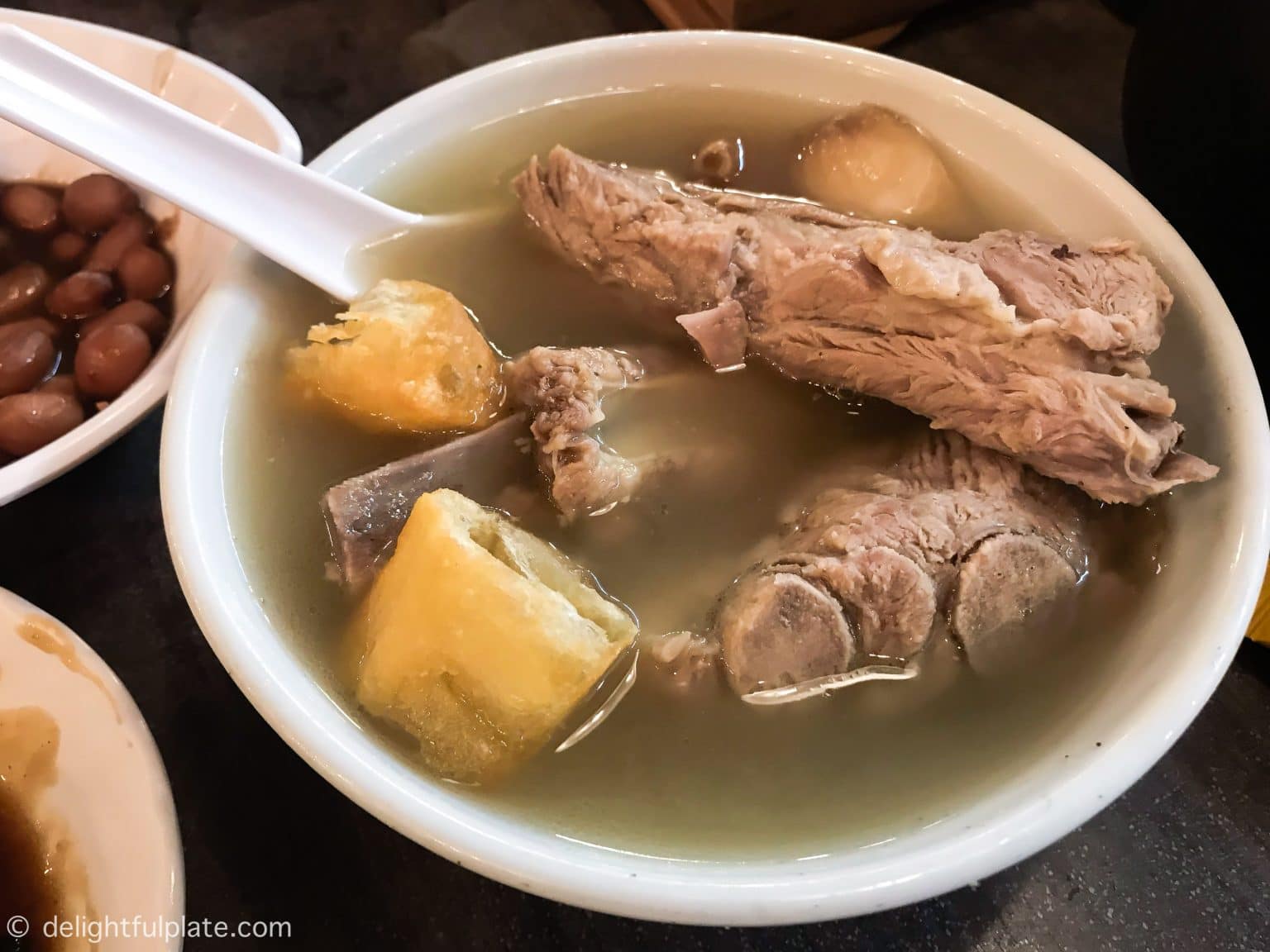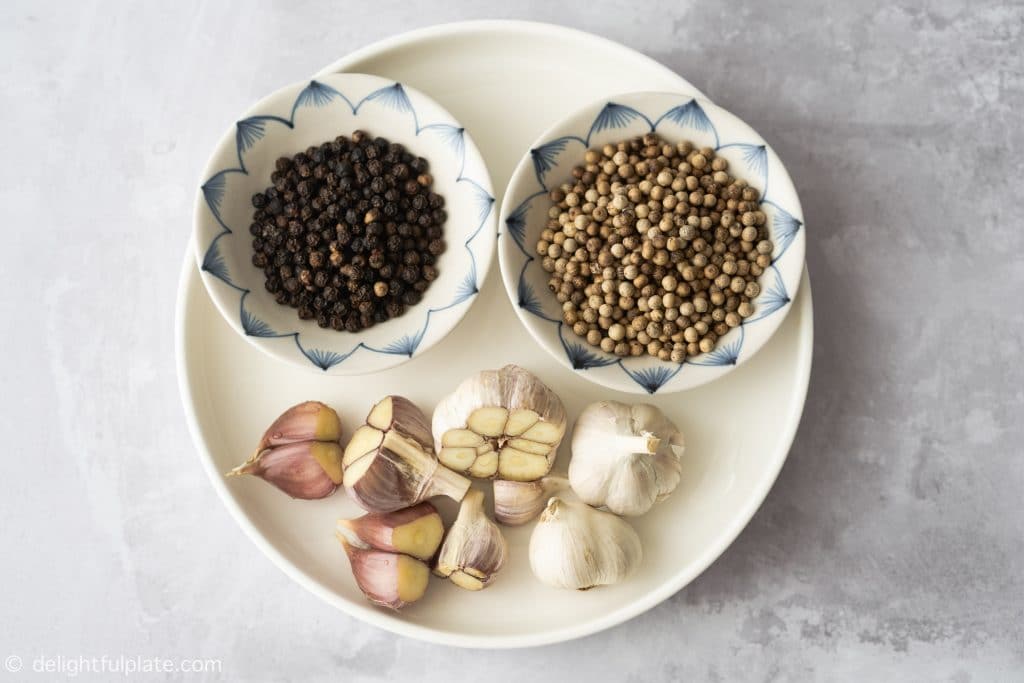White pepper bak kut teh is a delectable dish that has captured the hearts and taste buds of many. Originating in the vibrant streets of Southeast Asia, this aromatic soup has gained immense popularity worldwide for its unique blend of flavors and purported health benefits.
With its tantalizing aroma and comforting taste, white pepper bak kut teh is a culinary delight that deserves a special place in any food lover’s repertoire.
In this comprehensive guide, we will delve into the captivating world of white pepper bak kut teh, exploring its origins, distinctive characteristics, and the step-by-step process of preparing this flavorful dish. We will also discuss regional variations, traditional accompaniments, and the potential health benefits associated with this beloved soup.
Introduction
White pepper bak kut teh is a popular dish in Singapore and Malaysia, known for its distinctive flavor and health benefits. Originating from the Fujian province of China, this dish has become a staple in many Southeast Asian countries.
White pepper bak kut teh is characterized by its clear, flavorful broth made with pork ribs, white pepper, and a variety of herbs and spices. The dish is typically served with rice or noodles and is often accompanied by side dishes such as you tiao (fried dough sticks) and pickled vegetables.
Ingredients
White pepper bak kut teh is a delectable dish that combines a medley of flavors and textures. Its foundation lies in an array of meats, herbs, and other ingredients that work in harmony to create a symphony of tastes.
Let’s delve into the essential components that make up this tantalizing dish:
Meats
The heart of white pepper bak kut teh lies in the tender meats that soak up the rich broth. These typically include:
- Pork ribs: These meaty ribs provide a succulent base for the dish, their marrow infusing the broth with depth of flavor.
- Pork belly: The fatty, flavorful pork belly adds a luxurious richness to the bak kut teh.
- Pork trotters: These gelatinous trotters contribute a distinct texture and release collagen into the broth.
Herbs and Spices
The aromatic blend of herbs and spices is what gives white pepper bak kut teh its distinctive flavor profile. Among the key ingredients are:
- White pepper: The star of the show, white pepper lends its pungent, slightly spicy notes to the dish.
- Garlic: Fresh garlic cloves provide a savory base and enhance the overall flavor.
- Cloves: These aromatic buds add a warm, slightly bitter flavor to the broth.
- Star anise: Its distinctive star-shaped pods impart a sweet, licorice-like flavor.
- Cinnamon sticks: These woody sticks add a touch of sweetness and warmth.
Other Ingredients
Beyond the meats and herbs, various other ingredients contribute to the complexity of white pepper bak kut teh:
- Dried mushrooms: These rehydrated mushrooms add a umami-rich depth to the broth.
- Beancurd puffs: These fried tofu puffs soak up the flavorful broth and provide a contrasting texture.
- Dried lily flowers: These delicate flowers add a subtle floral aroma and a touch of sweetness.
Preparation
Begin by preparing the ingredients. Cut the pork ribs into bite-sized pieces and blanch them in boiling water for 5 minutes to remove any impurities. Rinse the ribs thoroughly and set aside.Next, prepare the broth. In a large pot or Dutch oven, combine the pork ribs, white peppercorns, garlic, and ginger.
Add enough water to cover the ingredients by about 2 inches. Bring to a boil over high heat, then reduce heat to low and simmer for 2 hours, or until the pork is tender.While the broth is simmering, prepare the other ingredients.
Cut the tofu into cubes and fry until golden brown. Cut the Chinese cabbage into large pieces.Once the broth is ready, add the tofu, Chinese cabbage, and any other desired ingredients. Simmer for an additional 15 minutes, or until the vegetables are tender.Serve
hot with steamed rice or noodles.
Variations
White pepper bak kut teh exhibits regional variations, reflecting the diverse culinary traditions and preferences across Malaysia and Singapore.
These variations manifest in the selection of ingredients, cooking techniques, and overall flavors, contributing to the unique culinary identity of each region.
Ingredients and Flavors
- Malaysia: Malaysian white pepper bak kut teh typically incorporates a wider range of herbs and spices, such as angelica root, dang gui (Chinese angelica), and cinnamon, imparting a robust and aromatic flavor profile.
- Singapore: Singaporean white pepper bak kut teh often features a simpler ingredient list, emphasizing the natural flavors of the pork and white pepper, resulting in a more delicate and subtly seasoned broth.
Cooking Techniques and Presentation
- Malaysia: In Malaysia, bak kut teh is commonly cooked using a traditional clay pot, which allows for slow simmering and infuses the broth with a smoky flavor. The soup is typically served in individual bowls, accompanied by a side of rice or noodles.
- Singapore: Singaporean bak kut teh is often prepared in large metal pots, enabling faster cooking times. It is typically served in communal bowls, encouraging diners to share and socialize while enjoying the meal.
Regional Influences and Cultural Impact
- Malaysia: The Malaysian variation of white pepper bak kut teh reflects the influence of Chinese immigrants from the Fujian province, who brought their culinary traditions to Malaysia. It is a beloved dish in Malaysia, often associated with comfort food and family gatherings.
- Singapore: Singaporean white pepper bak kut teh showcases the city-state’s unique blend of Malay, Chinese, and Indian influences. It is a popular street food, enjoyed by locals and tourists alike, and has become an integral part of Singapore’s culinary landscape.
Serving and Accompaniments
White pepper bak kut teh is traditionally served piping hot in individual clay pots or bowls. The soup is typically paired with a bowl of steamed rice or noodles, allowing diners to soak up the flavorful broth.
Various accompaniments enhance the dining experience and complement the flavors of the soup. These include:
Rice or Noodles
- Steamed rice: A classic pairing that absorbs the rich soup.
- Noodles: Options such as mee pok, mee kia, or kway teow provide a slurpable texture.
Vegetables
- Choy sum: A leafy green vegetable that adds a refreshing crunch.
- Youtiao (Chinese crullers): Crispy and fluffy, they soak up the soup.
- Other vegetables: Mushrooms, tomatoes, or bamboo shoots can be added for variety.
Sauces and Condiments
- Soy sauce: A staple condiment that adds saltiness.
- Dark soy sauce: Provides a richer flavor and color.
- Chili padi: Adds a spicy kick.
- Lime wedges: Squeeze a bit of lime juice for a refreshing touch.
Health Benefits

White pepper bak kut teh is not only a delectable dish but also a source of potential health benefits due to its carefully selected ingredients and aromatic herbs and spices.
The nutritional value of the ingredients in white pepper bak kut teh is commendable. Pork ribs, the primary ingredient, are a rich source of protein, essential amino acids, and minerals such as iron and zinc. The broth, simmered for hours with a medley of herbs and spices, extracts their beneficial compounds and flavors.
Medicinal Properties of Herbs and Spices
White pepper, the eponymous ingredient, possesses antibacterial and anti-inflammatory properties. Garlic, another key ingredient, is known for its antiviral and antimicrobial effects. Cinnamon and star anise, commonly used in the spice blend, are rich in antioxidants and have been traditionally used to alleviate digestive issues.
Effects on Digestion and Overall Well-being
The combination of herbs and spices in white pepper bak kut teh promotes digestion. The warm and aromatic broth stimulates the production of digestive enzymes, aiding in the breakdown of food. The dish is also believed to have a calming effect on the digestive system, reducing bloating and discomfort.
Consuming white pepper bak kut teh may contribute to overall well-being. The presence of garlic and other immune-boosting ingredients helps strengthen the body’s defenses against infections. The dish is also a good source of collagen, which supports joint health and skin elasticity.
Summary

As we conclude our exploration of white pepper bak kut teh, it is evident that this dish is more than just a culinary creation; it is a testament to the rich culinary heritage of Southeast Asia. Its unique blend of flavors, aromatic spices, and nourishing ingredients has made it a beloved dish that continues to captivate food enthusiasts worldwide.
Whether enjoyed as a comforting meal or a shared dining experience, white pepper bak kut teh is a dish that embodies the essence of culinary excellence and cultural tradition.
FAQ
What is the key ingredient that gives white pepper bak kut teh its distinctive flavor?
White pepper is the primary spice that imparts its characteristic flavor to this dish.
What type of meat is typically used in white pepper bak kut teh?
Pork ribs and pork belly are commonly used in this dish, providing a rich and flavorful broth.
Can I use other types of pepper instead of white pepper?
While white pepper is traditional, you may experiment with black pepper or a blend of peppers to create variations in flavor.
What are some common accompaniments served with white pepper bak kut teh?
Rice or noodles, vegetables like choy sum and youtiao, and various sauces and condiments are often served alongside this dish.
